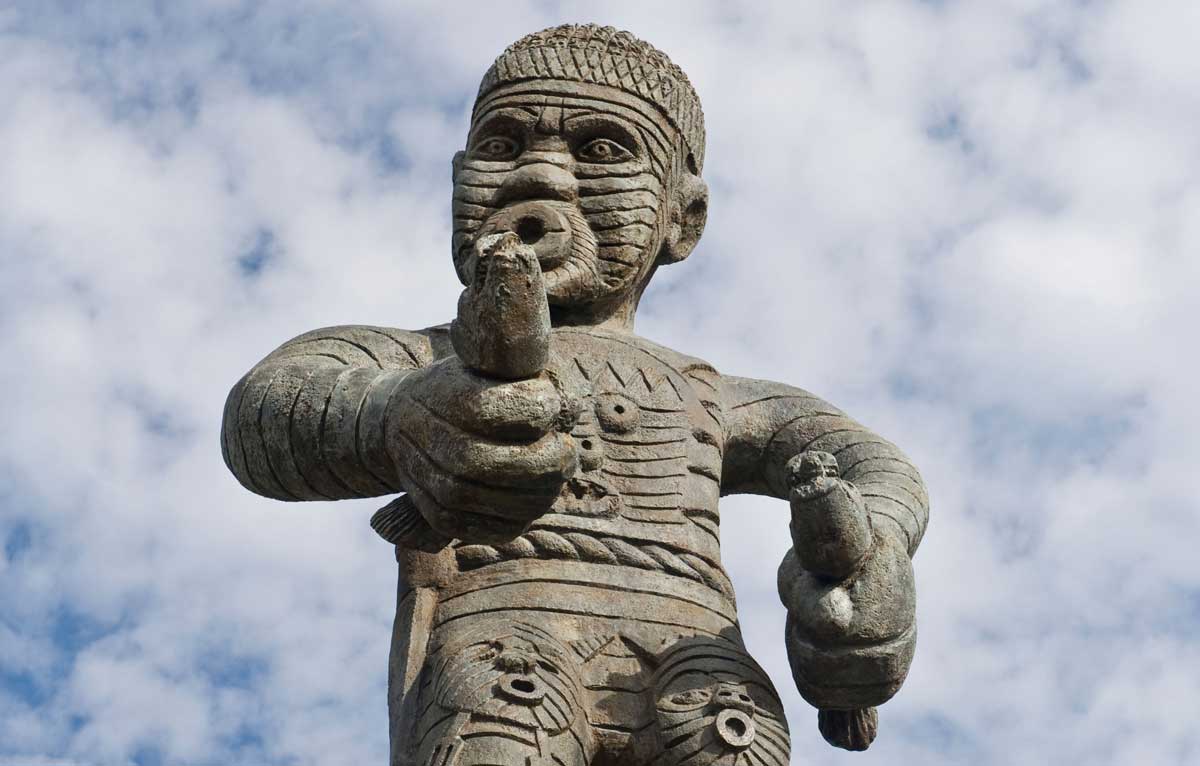cultură şi spiritualitate
Uncovering the stories of the enslaved men and women who fought off the Dutch and their European allies in 1763.
https://www.historytoday.com/archive/review/berbice-rebellion

Monument to Coffij, leader of the Berbice slave rebellion, Square of the Revolution, Georgetown, Guyana. Alamy.
You are not alone in not having heard of the Berbice slave rebellion. Marjoleine Kars was herself unaware of it until she chanced upon hundreds of pages of reports, interrogations and copies of letters written in Old Dutch by self-liberated former bondspeople, held in the Netherlands’ National Archives in The Hague. The resulting book is a model for how academic history can reach a wide audience, a narrative-driven work which presents pioneering archival scholarship in which we can hear the voices of the enslaved protagonists.
The colony of Berbice was situated on the coastal plain where the Berbice, Demerara and Essequibo Rivers meet the Caribbean Sea in what is now Guyana. Before 1763 Berbice had a population of between 4,200 and 5,000 enslaved people, 300 indigenous people and 350 Europeans. It was the possession of the Sociëteit van Berbice, a private company under the sovereignty of the Dutch Republic, until it became a British colony in 1815. In 1763 thousands of enslaved men and women fought off the Dutch and their European allies for nearly a year. Their stories have remained largely hidden until now.
Kars introduces us to the watery, harsh environment of Berbice through the journey of a man who was later named ‘Coffij’ by his Dutch enslaver. Having left the coast of Africa in the bowels of a slave ship and disembarked in the colony, Coffij travelled through mangrove and dense palm forest before arriving at ‘Goed Land en Goed Fortuin’ coffee plantation, which was plagued by hunger and disease. It was just one among many privately and company-owned sugar and coffee plantations, where a small number of whites ruled over the enslaved population with unchecked violence. In February 1763 that population rose up in a coordinated attack on the Dutch. Despite the existence of long-established independent Black (Maroon) communities in the region, and especially in the neighbouring colony of Suriname, escape and rebellion were perilous due to the climate, environment and shortage of food. Nevertheless, thousands joined the rebellion in the following weeks.
Coffij emerged as an astute leader of the rebellion, taking control over a diverse group of Africans, Creoles (Black people born in the Americas) and even mutinous white soldiers. As self-proclaimed Governor, holding the upper hand militarily, Coffij put forward the radical proposal that the colony be divided in two and that he rule the Black part, with the Dutch ruling the remainder. His proposal was rejected.
Kars represents the complexities of the rebellion without romanticising it; the survival of revolution in the face of European enemies required strict control over resources and people. Governor Coffij attempted to create a Black state where freedom was coupled with coercion, while African notions of honour, servitude and sacrifice contrasted with the independence envisioned by many formerly enslaved people. Divisions within the rebel camp played a crucial role in the fate of Coffij, and the revolution itself.
Despite this, the Dutch victory was far from a foregone conclusion. Their success was only possible because indigenous people fought for them, keen to maintain their trading ties and leary of rebel infringement on their land. The final blow was the aid that the Dutch received from other colonies. Despite imperial rivalries, in the age of slavery European colonial authorities could not permit a successful slave rebellion anywhere in the Caribbean.
Blood on the River: A Chronicle of Mutiny and Freedom on the Wild Coast
Marjoleine Kars
Profile 362pp £20
Buy from bookshop.org (affiliate link)
Bethan Fisk is Lecturer in Colonial Latin American History at the University of Bristol.
Adaugă un comentariu
© 2024 Created by altmarius.
Oferit de
![]()
Embleme | Raportare eroare | Termeni de utilizare a serviciilor













Pentru a putea adăuga comentarii trebuie să fii membru al altmarius !
Alătură-te reţelei altmarius